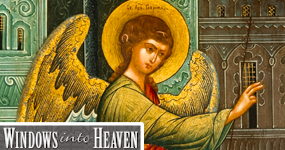We always talk about the Ninth Square, but we call the other eight different things. Nobody says, “Let’s have lunch in the Third Square today.” The Fifth Square, of course, is New Haven Green. The Fourth is essentially Yale. The First, Seventh and Eighth we think of as shopping districts, while the Ninth is largely defined by dining experiences, a.k.a. square meals.
This Friday, for the latest On9 (for Ninth Square, naturally), they’ll be laying out a table on Orange Street that can seat 150 people. That can’t be accomplished unless you have long, straight streets in the center of your city. Our grid design helps us in more ways than just computing that a big square can be divided into nine little ones. It keeps us on the straight and narrow, literally. We know where the center of town always has been, and we keep gathering there—on the Green, or at the corners, seated at an enormously long table—because we appreciate that, however spread out the city has since become, this is where New Haven has always gathered.
So we still adhere to this whole square deal. And we haven’t overdone it in the other direction, and gone adding more squares. East Haven? You mean the 26th Square? Do you prefer saying “Wooster Square” or 12th-ish Square? With the advent of buildings such as 360 State, does the Square concept start going vertical and three-dimensional?
sponsored by
According to generations of city historians, the original nine-square grid was a mix of urban planning ideas lifted from the Romans (particularly the pioneering architect Marcus Vitruvius Pollio in the 1st century B.C.) and the religious significance of laying out a grid pattern which had a church smack dab in the middle of it.
That church is now three, the Green is bisected by Temple Street, and the original nine squares have been distorted over time. So much so that when you look at an old map of the city (such as the one above, which also appears this month on the front cover of the Arts Paper published by the Arts Council of Greater New Haven) and try to square those squares with what the center of town looks like today, you’re asking for a migraine. It’s like someone has taken away your nine-square Sudoku puzzle and replaced it with a jigsaw puzzle.
Once it was easy: church at the center of the New Haven universe, with government and community necessities branching out from there. Beyond that, farmland. And the ocean, which gurgled much closer to downtown back then than it does now.
Now the New Haven grid pattern, in some respects, appears to have outlived its usefulness. When other parts of New Haven began to become residential rather than agricultural, they developed their own centers of worship and commerce and ultimately became separate cities. When carriages and then trolleys and then automobiles began to commandeer the streets, the grid was not sufficient to lead all those travelers to everywhere they wanted to go.
You can sense an erosion in the public consciousness about the nine-square layout and what it meant to the city. Somewhere in a filing cabinet in New Haven City Hall is a projected plan from long ago, thankfully never taken seriously, for a highway to cut right through the Green. The massive urban renewal projects of the the 1950s and ’60s under Mayor Richard Lee led to the relocation of long-established ethnic neighborhoods near the center of the city. And don’t get us started on the one-way streets.
Still, it’s lucky New Haven never entirely strayed from the path it had set out three and three-fourths centuries ago. Anyone in any century can see how much more effective a clean and perpendicular layout of streets is compared to the random cowpaths upon which much of Massachusetts and parts of New York City are based.
More than that, the nine squares still have meaning to pedestrians, scholars and political groups. It’s a statement when groups gather to march around the Green, then set off down College Street over to the Hill section of town. The array of government buildings—City Hall, the state and federal courthouses, the library—which have stayed in the center of town and have lost none of their imposing architectural glory is a testament to the powerful, spiritual attraction of that original grid.
You see other cities which, without a compelling urban-planning pattern to maintain, kept slivering their greenspace down to nothing. (Hello, Bridgeport!) Call us square, call us blockheads, but New Haven’s devotion to right angles and squared-off edges has helped keep the city on the cutting edge of architecture, park planning and other stuff you’re most aware of when you have maintained such a clearly delineated city plan for such a long time.
We’re not just talking about the Green, you understand. The grid. That sense of a criss-cross, a clean and clearcut pattern. That feeling of standing at certain corners of that grid—College and Chapel, or Church and Chapel—where the winds gust that much more strongly because they follow such a straight course from the Sound—is nature whispering, “Nice grid.”
Written by Christopher Arnott. Lead image depicts Lithograph of a Plan of the Town of New Haven, 1748, re-engraved by L. S. Punderson, published by Jacob Mailhouse, 1880. Collection of the New Haven Museum.









